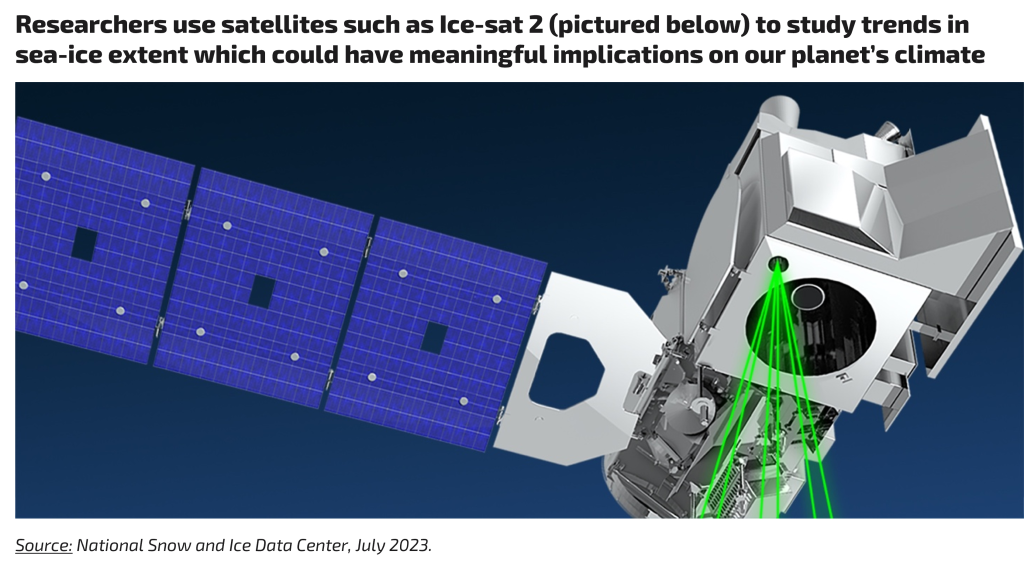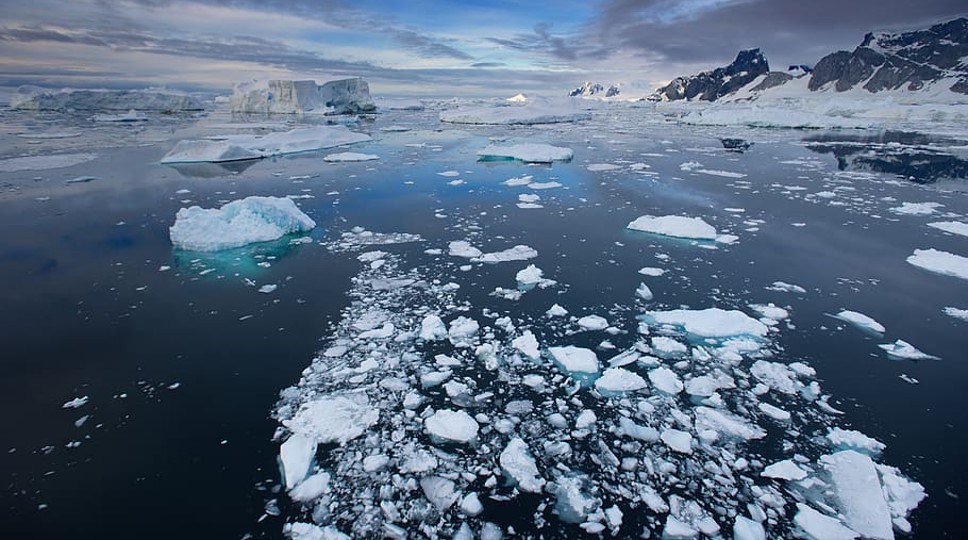Antarctic sea-ice has been an important topic amongst the scientific community for decades. Over the last few years, a number of changes in the usual patterns have occurred. According to a 2023 research paper, Antarctic mean sea-ice extent was generally increasing year over year from the start of the satellite era in 1979, until 2014. Despite one year of rebound, a sharp decline has been observed after the 2014 maximum. Early 2022 marked a rather extreme low point as the ice was 24% less than the 1981-2010 climatological average (Zhang and Li).
Moving forward to the present day, the Northern Hemisphere is feeling the full effects of the summer. Meanwhile, the Antarctic is locked in winter, and the sea-ice is in its growing phase. Although there is growth, the current extent is less than last year’s record low, and it is far below the long-term average.

So, as it seems the world may end up with back-to-back record setting lows. With such events, a question is raised. Is Antarctic sea-ice at the point of no return due to climate change? Well, that question is not so simply answered. Although the answer could be yes, two important points need addressing. Firstly, according to Zhang and Li, there are many mechanisms responsible for how much sea-ice grows and retreats. Therefore, understanding if climate change is the main reason behind the dramatic drop in ice actually requires a more developed deep dive into how the system is changing as a whole. Secondly, the trend has only been observed for roughly the last ten years. In terms of climate, this is not a sufficient amount of time to make concrete conclusions. Although modern research has made great strides to uncover the reasons behind the shrinking ice, it will take many more years of validation to confirm if there is a significant contribution from climate change. As the research progresses, the underlying source of confidence for the studies is and will continue to be satellite data.
Researchers use optical, radar, and LiDAR satellites in order to monitor the extent and thickness of the sea-ice on timescales that range from daily to annually. Without this data, it would be nearly impossible to study sea-ice. It is only with satellite data that we are able to make the best scientific assessments about what is occurring on earth’s surface and within the atmosphere.

Floodlight recognizes the importance of using geospatial data in order to answer other complicated questions about the earth. By incorporating public and private satellite data into various methodologies, carbon emission and sequestration can be accurately measured all over the world. This data serves as the baseline for clients who want to enact a climate transition plan for the future. There will be no more guesswork when deriving the steps for a more sustainable practice. Each and every part of the process can be scientifically measured and verified, just like the Antarctic sea-ice trends.
Citation(s)
Zhang, Chao, and Shuanglin Li. “Causes of the Record-Low Antarctic Sea-Ice in Austral Summer 2022.” Atmospheric and Oceanic Science Letters, 2023, p. 100353, https://doi.org/10.1016/j.aosl.2023.100353.

